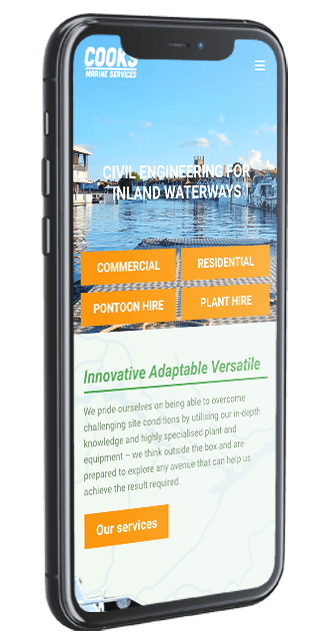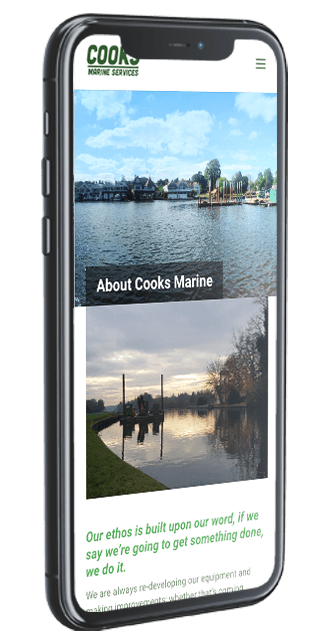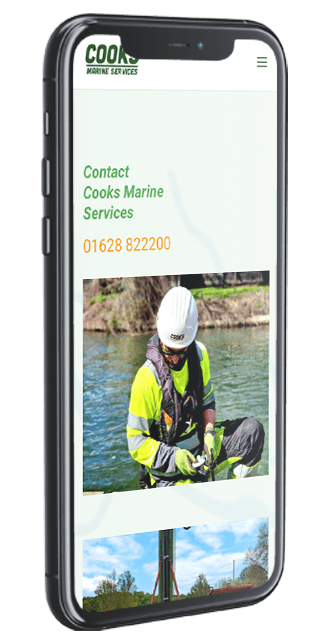







If you would like further information or a chance to talk to someone, please get in touch.
Sign up to our newsletter
John Henry Arthur Cook worked for the Thames Conservancy from April 1946 onwards. He started his career as an Assistant Lock Keeper but quickly progressed onto working in the construction arm. From this he went onto being a Diving Linesman for a gentleman named Jim Douglas. John must have learnt a few tips from Jim as he went onto become a diver himself. This is where John found his true love as he stayed as a diver for the Thames Conservancy for the rest of his career, up until his retirement in 1987. Being a commercial diver wasn’t the best paid job, so John Cook would take on private work every weekend, undertaking work for private domestic clients. This would encompass constructing small bridges, undertaking riverbank repairs, dredging, installing jetties and pontoons. His son Iain was born 1958 and was one of five children.
From a very early age, Iain often accompanied his father John to work, back in the days when this was normal practice. As a young boy, Iain got to sit in excavators, cranes, tugs, and all manner of construction and marine equipment. Getting the opportunity to sit on the lap of the operators, watching first-hand how to operate heavy plant and machinery. Being a child in this environment meant that Iain got to soak up a lot of useful information on how marine construction works. From a very early age, Iain Cook was involved on site, driving dumpers and being hands on. Iain can remember being a child in the early 1960’s and being on site, undertaking riverbank repairs at the property of Sir Billy Wallace and Lady Ashcombe. Upon leaving school, Iain worked for a swimming pool company for 3 months. Then he had 2 years in the Chilterns tree felling.
Whilst at school Iain did an apprenticeship in bricklaying, so when the tree felling work stopped Iain went to work as a bricklayer. These were his Monday to Friday jobs, so all the time this work was being undertaken, Iain would be working every weekend with his father John Cook. They must have worked on hundreds of river and marine projects together. Working 7 days a week was a mindset that Iain grew up and he never knew any different and this has not stopped to this day. In the early 1970’s, Iain was 13 years old and recalls working on a project for a gentleman named Michael Elliott. His father John had a team of guys working on installing a bailey bridge at Michael’s property. Johns’ operators were being paid £1 an hour and Iain was on just 25 pence per hour in comparison. Iain remembers Michael Elliott turning around to his father John, who was in charge of the team saying that Iain should be paid the same rate as the rest of the men as he was working just as hard as they were. Quite an accolade for such a young lad, but this made Iain realise that the harder you worked, the more you got paid. It was that very job that set up his mind set that hard work pays off. His firm belief is that you can have anything you want in life if you’re prepared to work hard for it.
So, in 1979 Iain set himself up as self-employed, just as the building trade had collapsed during the economic crash. John advised Iain to get to work on a project in Wargrave, undertaking a riverbank repair. Following this Iain continued to work on river restoration projects and river related construction work. Over time Iain began to establish his own team of men and was starting to build a reputation for undertaking high quality river construction projects for private customers in the West Thames area. His first phone call to enquire about a new project under his own banner, was for the slipway installation at Hambleden Mill, that was circa 1979/1980. Iain stayed as self-employed status up until 2004 under the trading name of Iain J Cook Riverbank Piling up until 1982. Iain decided that was quite a mouthful, so shortened the name to just Cook Piling. It was this name change that found his reputation grow and through word of mouth the work enquiries kept coming in. Iain’s very first piece of machinery that he bought for himself was an old 3.5t chieftan excavator, purchased in 1979.
Iain’s first Boat house was a take down and rebuild in 1980 in Wargrave. Iain’s first piece of marine plant was set up in 1981, his very own works platform, this was the start of what is now Cooks Marine Services. In 1982 Iain worked on a project installing riverbank piles next Oakley Court. The Oakley Project was 1260ft of river steel sheet pile installation, costing the client at the time £10.50/ft. Cooks first barges were bought direct from the Environment Agency around 1982, for £50 each, bought as scrap metal. Iain went about undertaking a full refurbishment and restored them and turned them into a fully operational working barge. This followed his first major contract for marine works after Oakley Court, Pangbourne. Cooks first tug was a fibre glass one, bought in 1984 in Staines from a gentleman called Charlie Austin, the boats name was simply C G N A. The engine was ceased, and Iain managed to purchase it for very little money at the time. After some hard work, the engine was fully refurbished, and it was air cooled and hand wound. Iain remembers the awful heat that was produced from the boats engine, making the working conditions really challenging. The boat was dreadful to steer, often taking a route of its own along the river. Iain can remember nearly crashing this awful boat on several occasions, avoiding a near miss.
The first boat that Iain was really proud of was the ‘Captain Cook’, a steel tug, bought in 1986 from Janet Marine in Penton Hook. It was an unusual one-off build, so it is believed to be one of its kind. The first crane was a Jones 1500 bought in 1988, Iain remembers feeling like he was Sir Alfred McAlpine when that crane was delivered. But Iain’s dreams were soon shattered when he looked at the HIAB of his brand-new crane to find out that the dealer had fitted second hand controls and seat. Not what he expected from his largest investment at the time. Iain Cook was the first person to buy a HIAB on a barge, it was a HIAB 100 knuckle boom crane on a new barge. It was constructed to be able to fit into tight and awkward places on the river.
This barge went onto working directly for the EA on Marsh Lock, circa 1990. The project was run by Fergals, undertaking a full lock refurbishment. The client had asked John Fenn to be able to load and transport tarmac, but the tug was not capable to do this, and their tug ended going downstream as it was insufficient for the task at hand. This misfortune for John Fenn was an opening for Cooks, as this provided Cooks with their first commercial contract. This being down to the unique capabilities of Iain’s bespoke barge, as it could fit into the lock and worked excellently for transporting materials. This was a real milestone in the trading of Cooks, as it marked the beginning of working for both commercial clients, as well as private domestic ones. This project established Cooks name amongst the EA and other marquee clients. It led onto two other major contracts for Cooks that really set them apart from the competition at the time.
1986 saw Cooks run the construction of Temple Marina. Then in 1989/90 Cooks landed their longest contract at the time, an 18-month project at Viners Island, protecting the top end of the island. 1991 saw the birth of Iain’s son, Sam, who has grown up working with Iain and is currently the operations director. 2004 saw the establishment of Cook Piling Limited. This logo became iconic with river works in the West Thames area for any work from Teddington Lock up to Buscot. 2021 saw the rebrand of Cook Piling, because as a company we undertake a whole array of marine services, hence the change to Cooks Marine Services.